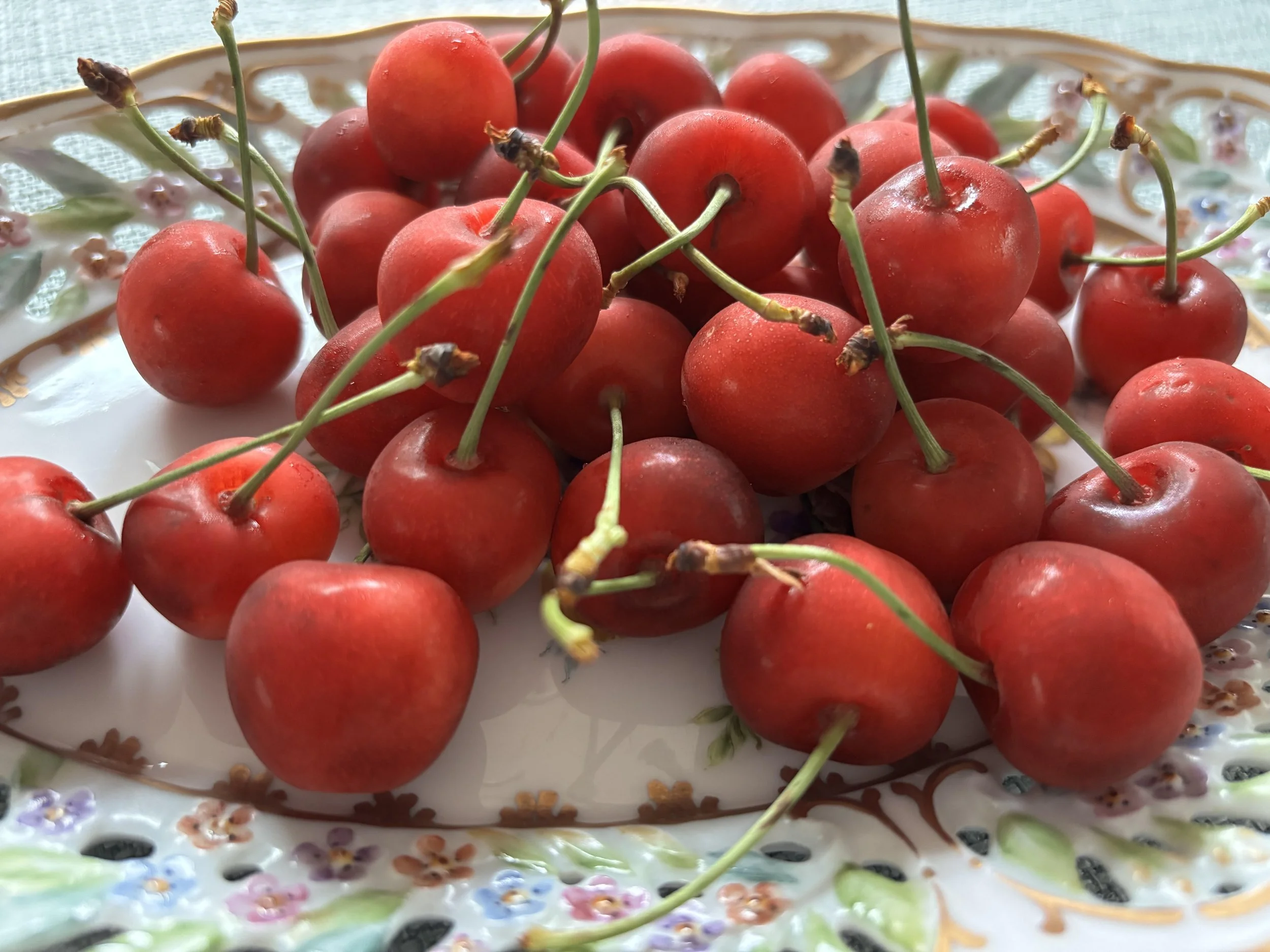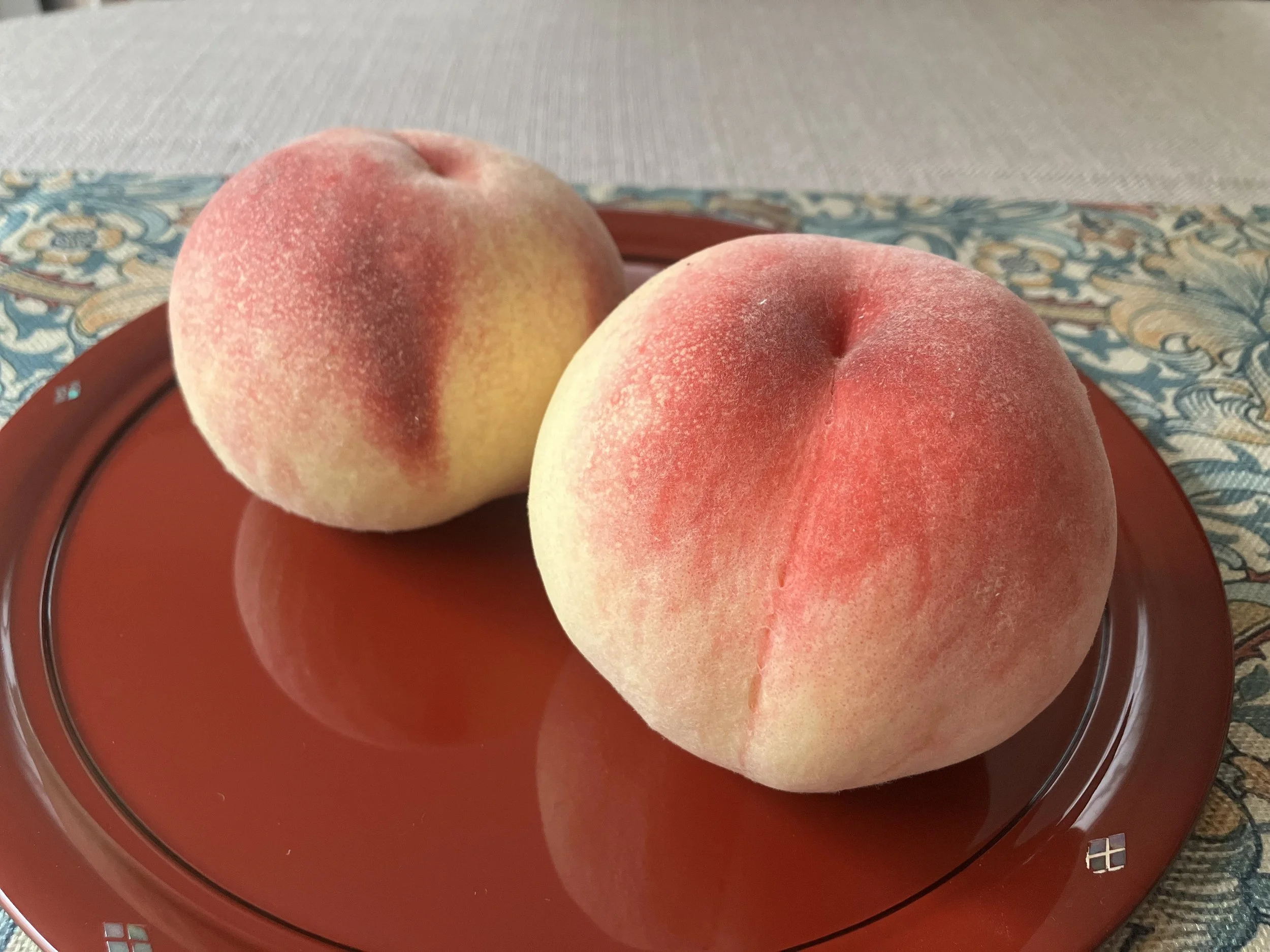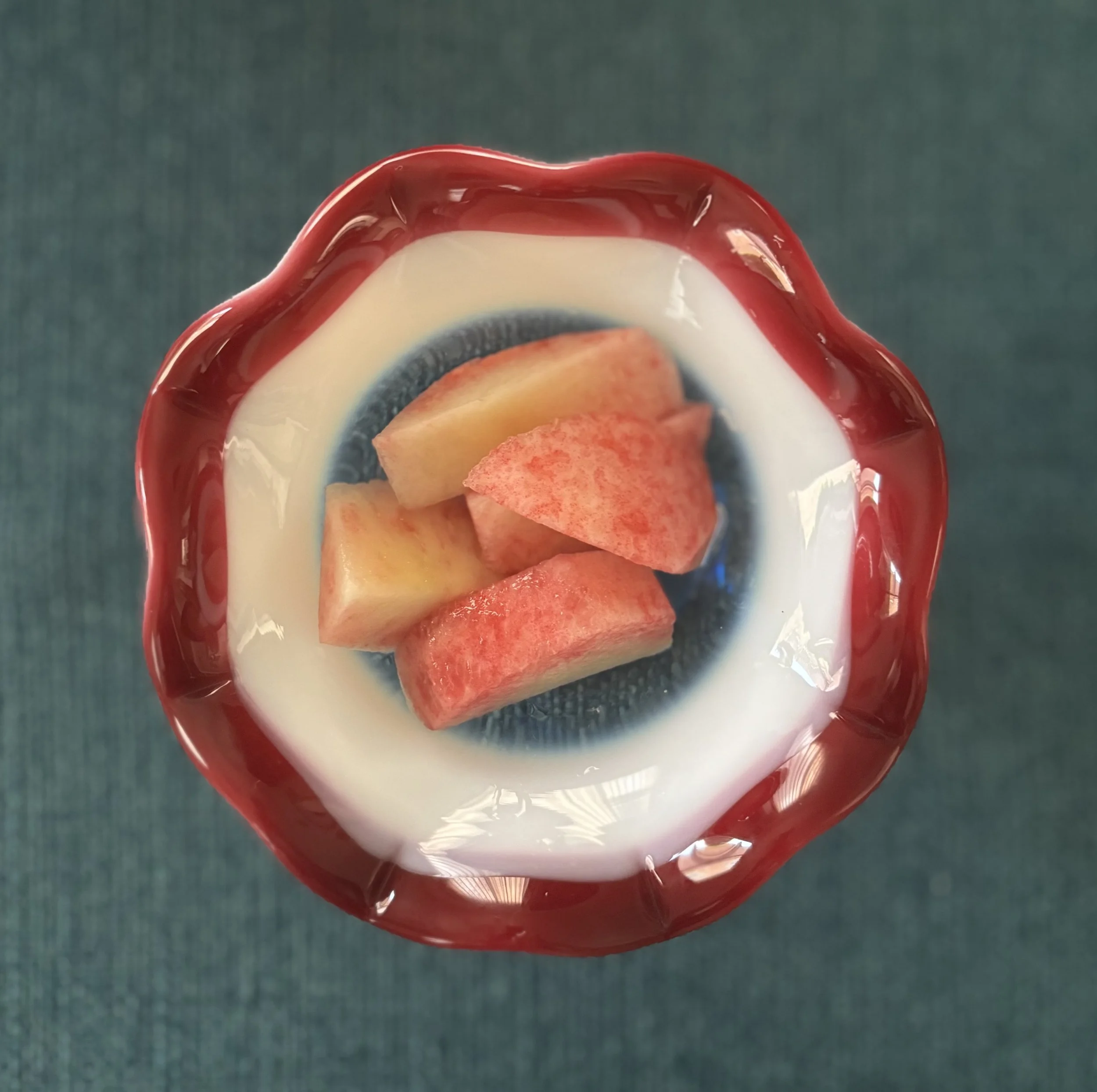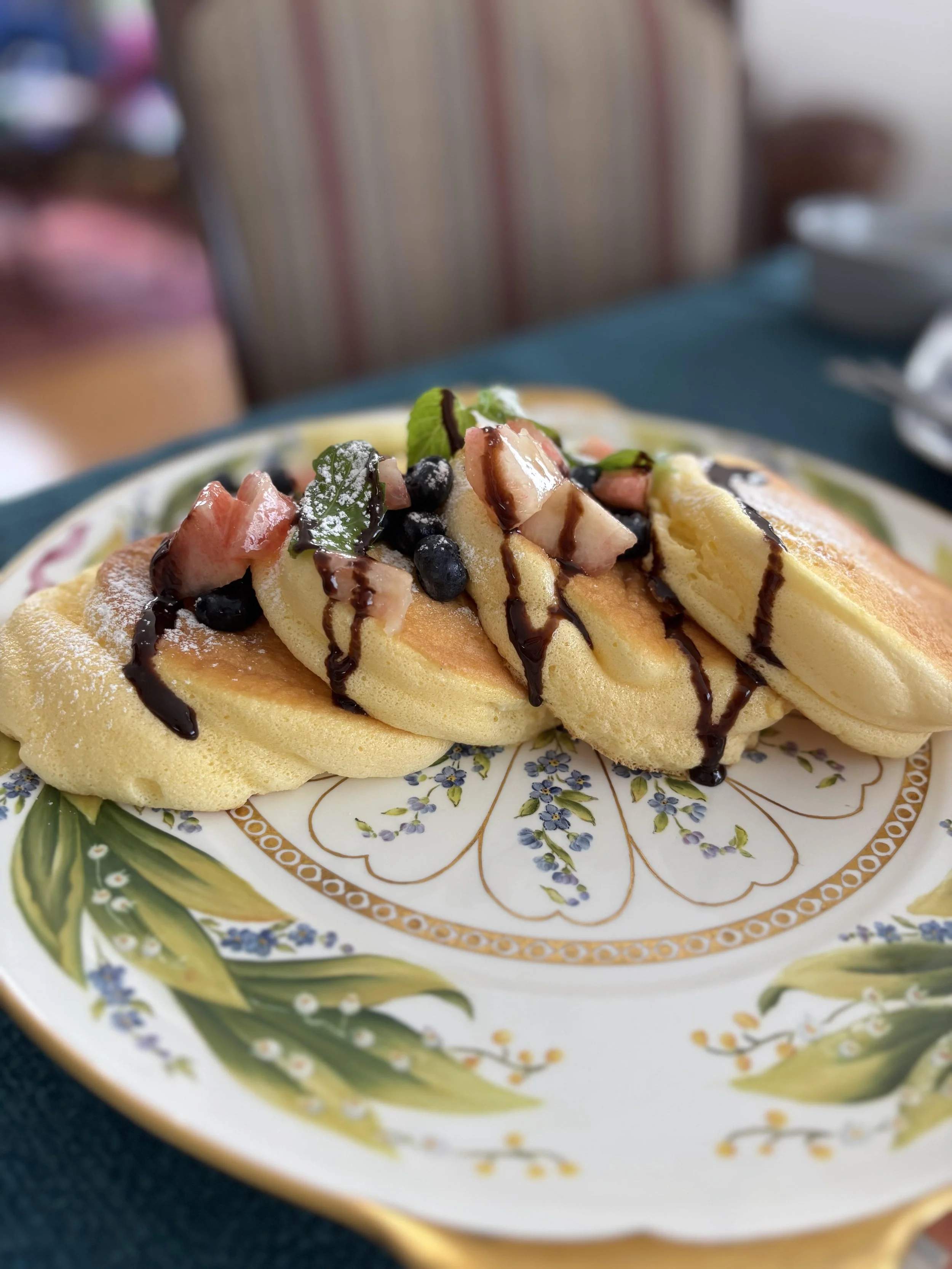The Most Delicious Japanese Fruits in the World- Japanese home cooking class in Tokyo
Japanese summer fruits are known for their high water content and refreshing juiciness, making them perfect for the hot season. They are excellent for hydration and nutrition, helping to prevent summer fatigue and maintain good health. Here, I would like to introduce three representative summer fruits: cherries, muskmelons, and peaches.
紅秀峰-Benishuho is a cherry variety developed in Yamagata Prefecture, known for its large size and pronounced sweetness.https://www.byfood.com/experiences/fluffy-pancake-making-class-tokyo-1170
Cherries
Cherries (sakuranbo) are the fruit of the wild cherry tree, belonging to the Rosaceae family, and are mainly enjoyed as an early summer delicacy. In Japan, their peak season is from June to July, with Yamagata Prefecture producing about 70% of the nation’s cherries. Popular varieties include Satonishiki, Takasago, Beni Shuho, and Kai Ruby. Satonishiki, in particular, is known as the “red ruby” and is highly prized as a gift.
Color: Most cherries are red, but some varieties are yellowish-white or deep red.
Flesh: Japanese cherries are typically white-fleshed with a good balance of sweetness and acidity. American cherries, by contrast, are red-fleshed and tend to be sweeter.
Nutrition: Rich in vitamin C, potassium, folic acid, and beta-carotene, cherries also contain malic acid, citric acid, glucose, fructose, and anthocyanins with antioxidant properties.
Fresh and beautiful cherries(紅秀峰-Benishuho)- Japanese home cooking class in Tokyo
In 2025, poor weather in Yamagata Prefecture led to a harvest of only 70–80% of the usual yield, making it a difficult year for growers. Cherries are deeply connected to Japanese seasonal traditions and gift-giving culture.
Muskmelon
Muskmelon refers to melons with a netted rind, renowned for their rich aroma and intense sweetness. The name “muskmelon” comes from “musk,” referring to their fragrant scent, not “mask.” In Japan, the term typically refers to the Earl’s Favourite variety and its relatives, all high-end netted melons.
Muskmelon from Chiba Prefecture- Japanese home cooking class in Tokyo
https://www.byfood.com/experiences/fluffy-pancake-making-class-tokyo-1170
Shape: Round fruit with a beautiful, fine net pattern on the skin.
Flesh: Pale green, juicy, and extremely sweet.
Aroma: Strong, musky fragrance.
Cultivation: Difficult to grow and susceptible to disease, so grafting onto hardy rootstock is common.
Ripening: Requires post-harvest ripening; the stem wilts when ready to eat.
Famous Brands:
Crown Melon: The top brand from Shizuoka Prefecture, each fruit is grown individually on a single vine and must pass strict quality standards to bear the “crown” label.
Other Brands: Names and characteristics vary by region, such as Aroma Melon.
How to Eat & Store:
Ripen at room temperature; it’s ready when the stem wilts or the skin turns slightly yellow.
Chill for a few hours before eating, then slice and enjoy as is.
Leftovers can be frozen for sherbets or smoothies.
Main Production Areas:
Shizuoka Prefecture is famous for Crown Melon and other premium brands.
Chiba and Yamagata’s Shonai region are also known for melon cultivation.
Peach
Peaches are deciduous trees or shrubs in the Rosaceae family, with both the fruit and flowers called “momo” in Japanese. Originating from China or Persia, peaches have been cultivated and bred worldwide. In spring, they bloom with five-petaled or double flowers, and in summer, they bear juicy, sweet, round fruit.
Fresh white peach from Yamanashi Prefecture - Japanese home cooking class in Tokyo
The joy of savoring the flavors of the season- Japanese home cooking class in Tokyo
Varieties: The most common in Japan are white-fleshed types like Hakuto and Hakuhou. Hakuto peaches have white flesh and pink skin, known for their juiciness and sweetness. Popular varieties include Shimizu Hakuto and Kawanishi Hakuto. Yellow peaches, with yellow flesh, are mainly used for canning but are increasingly available fresh. The flat-shaped Chinese “Pantao” is rare and highly valued.
Nutrition: Peaches are rich in potassium, which may help lower blood pressure. Yellow-fleshed types are high in carotene with antioxidant effects, and all peaches are a good source of pectin (dietary fiber).
Traditional Uses: Peach seeds (toh-nin) are used in Chinese medicine for blood circulation and women’s health, while the leaves and flowers are used for diuretic and laxative effects. (Caution: not recommended for pregnant women or those with anemia.)
Cultural Significance: In China, peaches are considered a symbol of longevity and protection from evil. In Japan, they are associated with spiritual power, and the “Peach Festival” (March 3) celebrates girls’ healthy growth with peach blossoms. Many legends and stories, such as “Momotaro” and “Journey to the West,” feature peaches.
Season & Production: Peaches are in season from June to August, with Okayama and Yamanashi Prefectures being famous production areas. Harvest times vary by variety and region.
How to Eat: Enjoy peaches fresh, or use them in compotes, cakes, and syrups. To cut, slice along the natural crease to the pit, then twist to separate into halves.
Peaches are loved not only for their flavor but also for their health benefits and cultural significance throughout Japan and Asia.
Homemade Japanese fluffy soufflé pancakes topped with fresh peaches - Japanese home cooking class in Tokyo
https://www.byfood.com/experiences/fluffy-pancake-making-class-tokyo-1170
What kinds of fruits are enjoyed in your country?
I hope you will take the opportunity to savor seasonal fruits as well.
Here in our Japanese home cooking class, I offer seasonal fruits throughout the year.
If you visit Japan, I highly recommend trying these delicious, in-season Japanese fruits.
Please book from here.
https://www.byfood.com/experiences/fluffy-pancake-making-class-tokyo-1170





